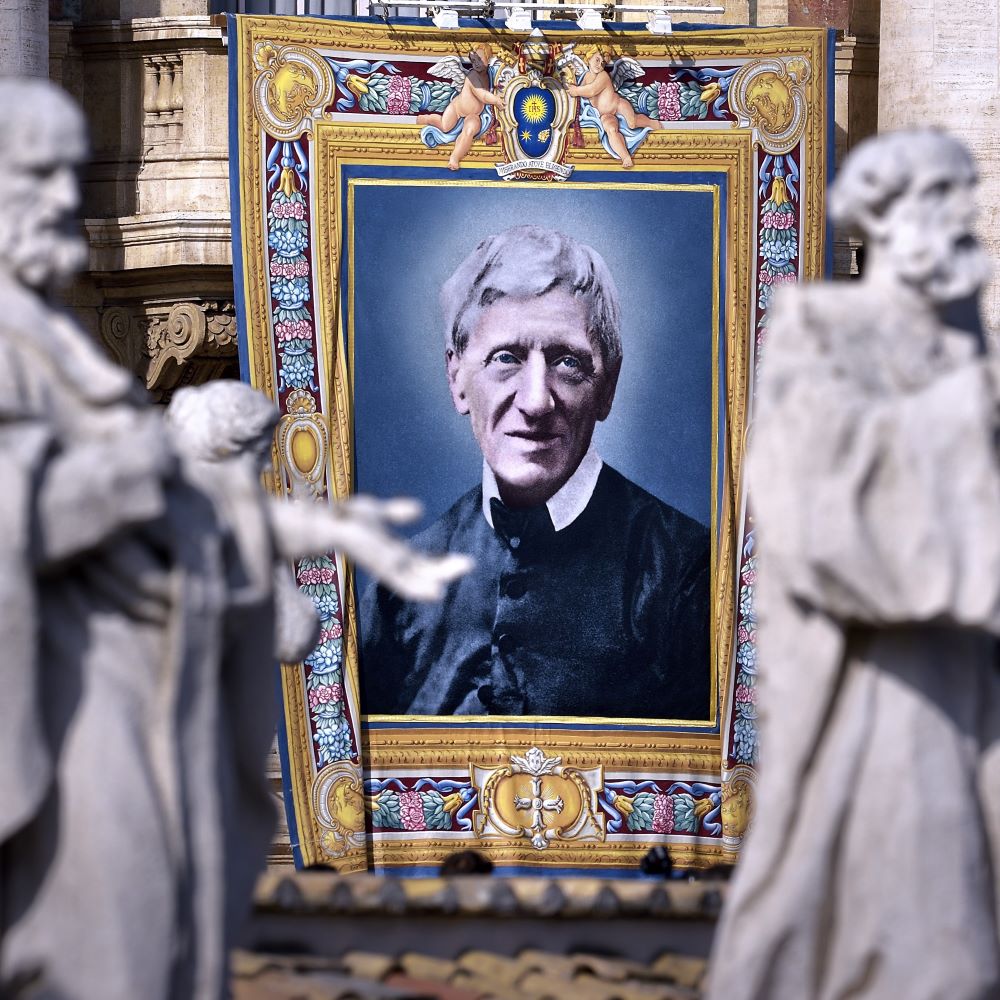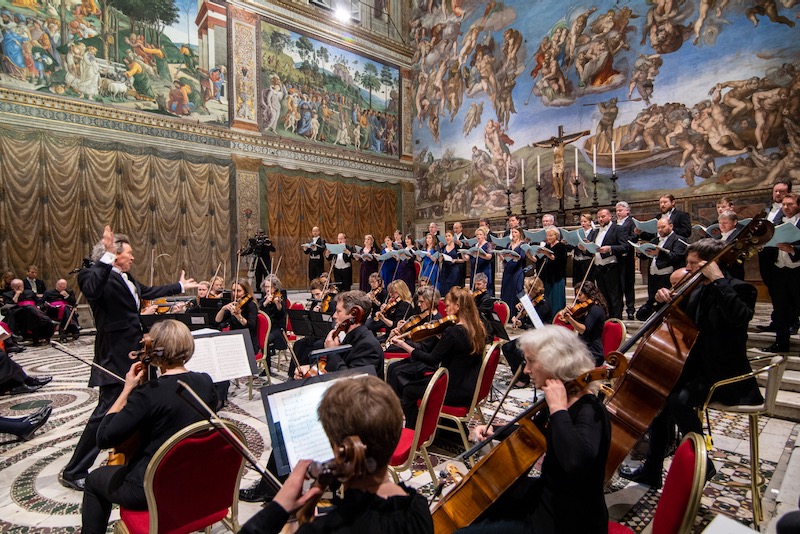The coronavirus has deprived us of a communal celebration of Holy Week. To a greater or lesser extent, each of us is now isolated at this most sacred time of the year. Fortunately, through our faith, we can remain spiritually connected with each other. On a more corporeal level, technology enables us to communicate and to share mediated experiences.
How different life was two years ago, on Sunday 22nd April 2018, when the setting of the Stabat mater by Scottish composer James MacMillan was performed in the Sistine Chapel of the Vatican, a space synonymous with some of the greatest sacred art that mankind has produced.
Through the support of Cardinal Vincent Nichols, Archbishop of Westminster, and with the gracious permission of the Papal Household, the Genesis Foundation – which I established in 2001 – had the privilege of presenting a new work of sacred musical art in that extraordinary place.
The performance at the Vatican was the first time that this version of the Stabat mater had been heard outside the United Kingdom. MacMillan, who turned 60 last year, is the greatest living composer of spiritual music. The work, commissioned by the Genesis Foundation, received its premiere at London’s Barbican in 2016 and was immediately hailed as a masterpiece.
In the Sistine Chapel, surrounded by Michelangelo’s overwhelmingly powerful frescoes, the impact it made was perhaps still greater. After the performance, The Times’ correspondent wrote: “It’s hard to imagine those astounding visual evocations of God’s relationship with humanity being more fittingly complemented by music than they were on Sunday evening.”
While the text of the Stabat mater does not form part of the Holy Scriptures, it reflects with great immediacy and profundity on the Crucifixion. The immeasurable grief of the Virgin Mary is evoked with searing economy and immediacy by a medieval poet, in all likelihood Jacopone da Todi. The truths of the text become still more evident to us as we listen in these times when the entire planet is fighting a new and still mysterious disease: the image of a suffering mother remains as universal and powerful as it has always been.
At the Sistine Chapel, as at the Barbican, the performance was conducted by Harry Christophers, whose association with the Genesis Foundation goes back more than a decade. The choir was the world-renowned group he founded, The Sixteen, and the orchestra was the pioneering British ensemble, the Britten Sinfonia.
The Tablet’s Christopher Lamb was in the Sistine Chapel too. As he wrote at the time: “Listening to Sir James’ setting of the Stabat mater is painful. It also transfixes, captivating the audience for an hour in a contemplative prayer. But this is no sweet mysticism. After a soft beginning of plainchant the concert swiftly moves onto the tremendous agony of the crucifixion ... The waves of grief are unsettling and haunting as the violins play piercing almost discordant notes. At other moments it leaves you confused, unsettled and almost desolate. But then the turning point. ‘Holy mother, bring this to pass,’ the choir sing over and over again. ‘Let me weep with you, pious one, grieving with him who is crucified, so that I may live …The final verses of the Stabat mater represent the first rays of dawn sunshine after a long, dark and tormenting night. ‘When my body dies, let my soul be given, the glory of paradise. Amen.’”
In 2018, the performance from the Sistine Chapel was broadcast worldwide on the internet. Now, on the evening of Good Friday 2020, as this Holy Week of isolation enters its most intense period, we can join in watching it together and in reflecting on its messages.
James MacMillan’s setting of the Stabat mater is both sensitive and powerful. Acknowledging tradition while remaining very much of our time, it has instantly connected audiences to the eternal story of a mother’s suffering. This performance from the Sistine Chapel, which is so spiritually resonant, can only serve to deepen and dignify that connection, and to bring us together at this time of crisis and contemplation.
In rising from the tomb, Christ assured us of salvation. On Good Friday, as we continue our re-enaction of the events of his final week, we will purify and renew ourselves through our identification with his suffering, and, through the Stabat mater, with the suffering of his mother.
The Vatican premiere of James MacMillan’s Stabat mater will be broadcast on the Genesis Foundation’s YouTube channel, here, at 7.30pm BST on Good Friday (10 April 2020).
John Studzinski is an investment banker and philanthropist, based in London and New York. He is the founder of the Genesis Foundation, a Vice-Chair of Human Rights Watch, and is the chair of the Arise Foundation, which he helped found.



 Loading ...
Loading ...
What do you think?
You can post as a subscriber user ...
User comments (0)